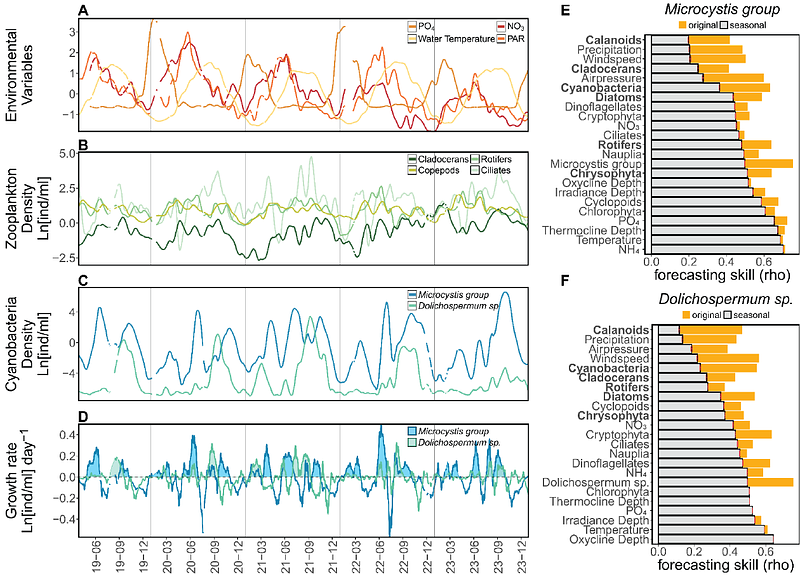Biotic interactions shape the realised niche of toxic cyanobacteria

Biotic interactions shape the realised niche of toxic cyanobacteria
Ntetsika, P.; Eyring, S.; Merz, E.; Reyes, M.; Kaech, B.; Munch, S.; Dennis, S.; Baity Jesi, M.; Pomati, F.
AbstractCyanobacterial blooms increasingly threaten vital freshwater ecosystems, with harmful impacts exacerbated by climate change and eutrophication. Despite extensive research on temperature and nutrient effects, our predictive capacity remains limited. We propose that this limitation stems from insufficient understanding of how biotic interactions modify cyanobacterial responses to abiotic conditions. Using five years of daily monitoring data from a eutrophic lake and state-space reconstruction modelling, we show that interactions with co-occurring plankton species fundamentally reshape the realised niche of bloom-forming cyanobacteria. Biotic interactions shift temperature thresholds by up to 13C and phosphorus requirements by over 20 ug/L-effects substantial enough to determine whether environmental conditions support or prevent blooms in Microcystis and Dolichospermum. Grazing inhibits bloom formation across cyanobacterial taxa, while facilitation by other phytoplankton may allow blooms at unexpectedly low temperatures and phosphate concentrations. These findings address a fundamental research gap-how species interactions shape realised niches in natural systems-while offering practical insights for bloom management. By integrating biotic interactions into monitoring programs and predictive models, we can improve forecasting accuracy and develop targeted interventions that complement traditional nutrient control approaches. These findings parallel recent advances in ecology suggesting the fundamental role of biotic interactions in mediating species\' responses to environmental change.